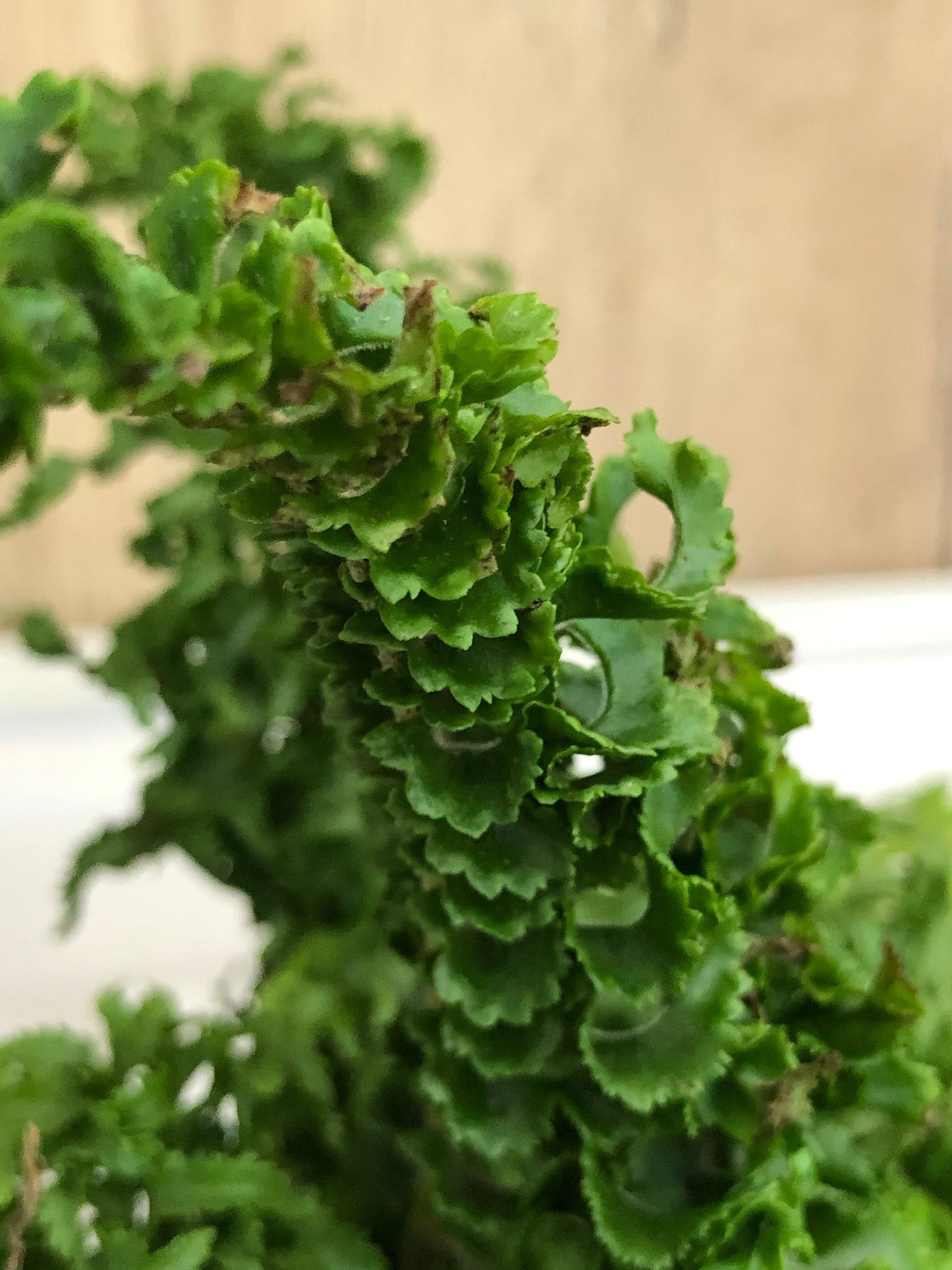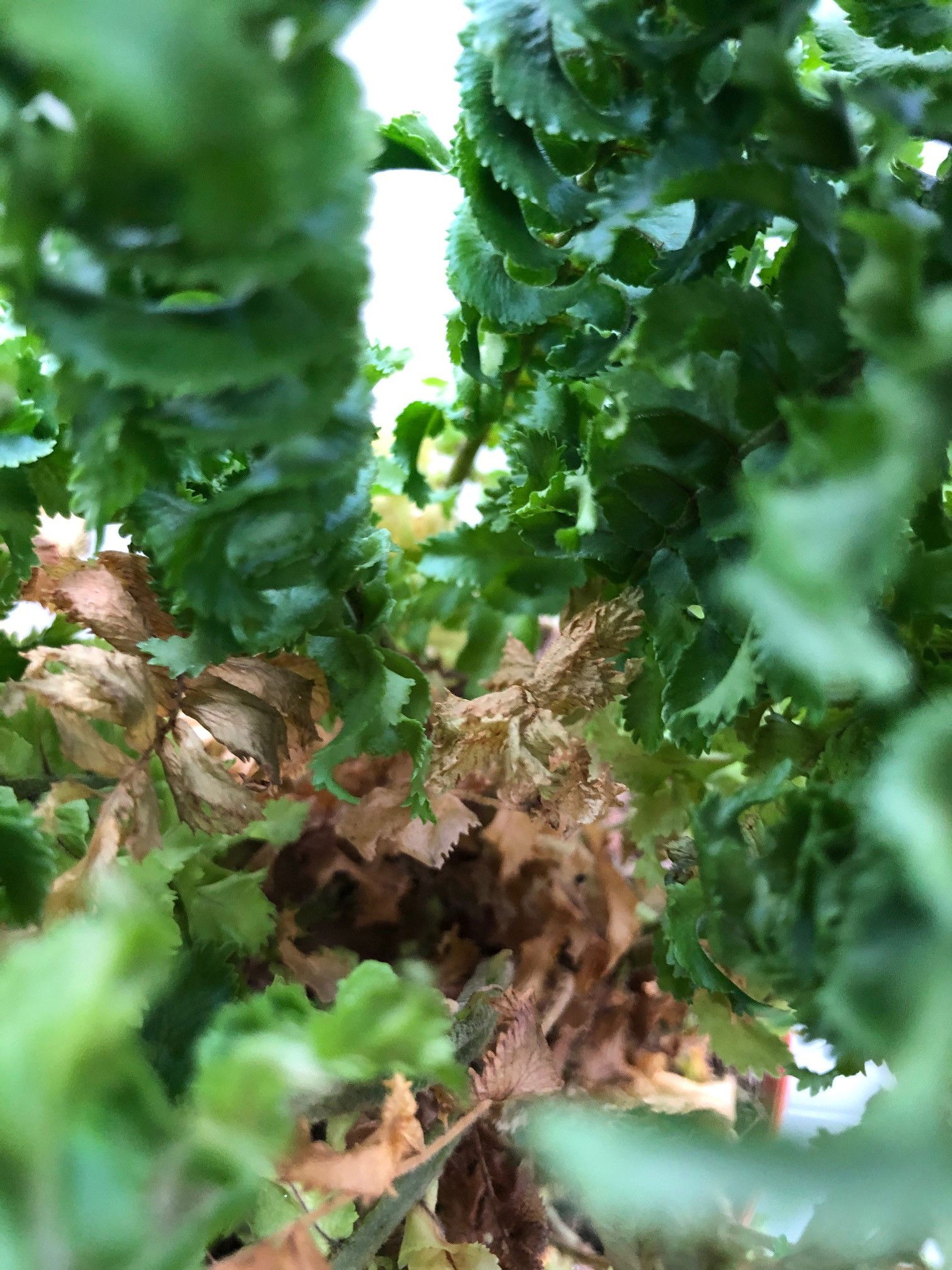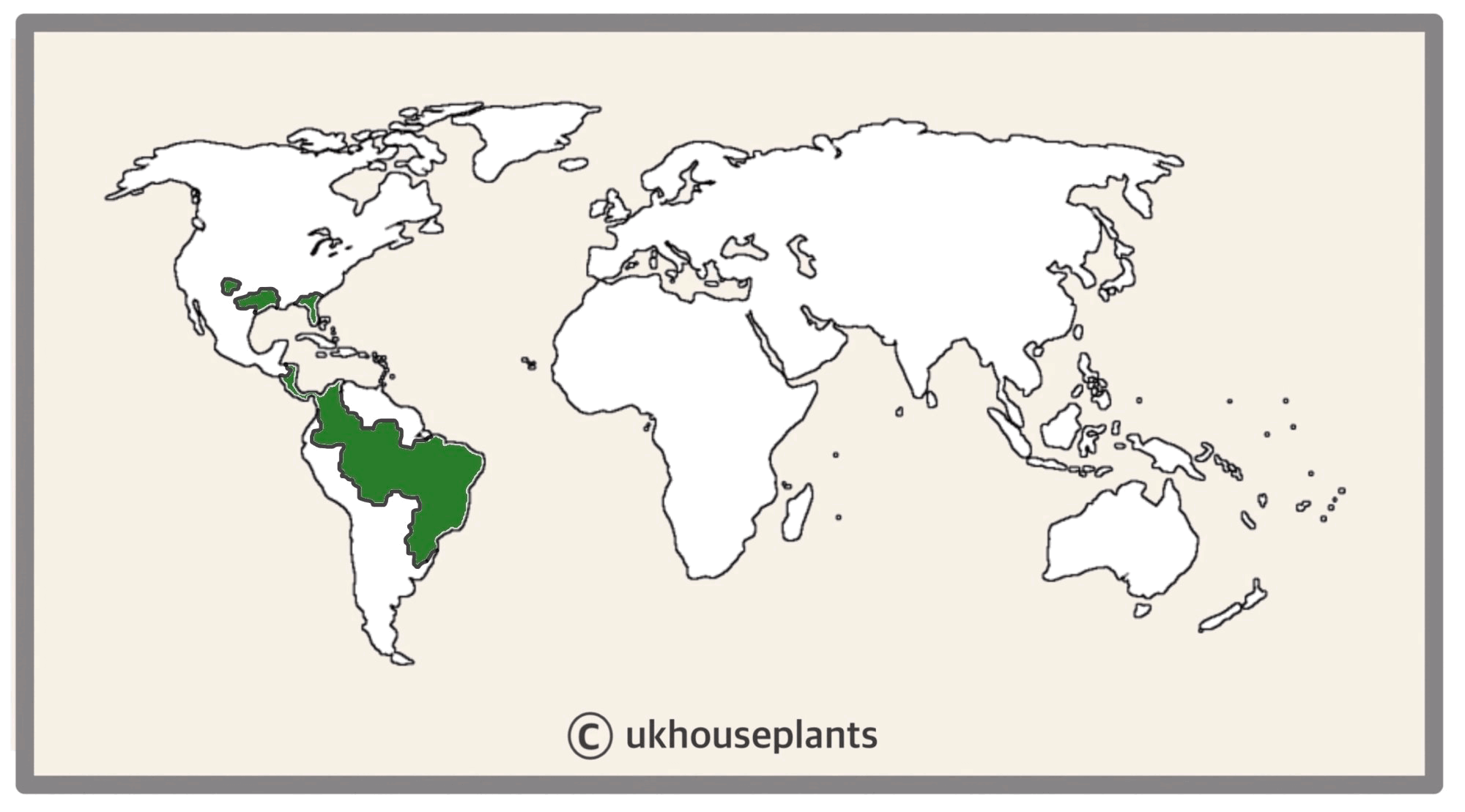
Nephrolepis exaltata 'Emina'
Contents
- Top Tips
- Location, Water, Humidity & Fertilisation
- Common Issues
- Origins, Temperature, Propagation, Repotting & Toxicity.
Need the answer to a specific plant query? Book a 1-to-1 video call with THE HOUSEPLANT DOCTOR™, the website's friendly author, to overcome and address your niggling problem! Available on iMessage, WhatsApp, Facebook Messenger & more.
Top Tips & Info
- Care Difficulty - Easy to Moderate
- Provide a bright, indirect location away from the direct light or deep shade. The combination of too little light & over-watering will quickly result in yellowed leaves & a decline of health.
- Maintain evenly moist soil, allowing the top quarter to dry out in between hydrations. Avoid excess moisture settling in the plant's central foliage as this may result in southern blight or yellowed fronds.
- Create a pebble tray to provide a stable level of surrounding moisture, especially in warm or bright locations.
- Fertilise using a 'Houseplant' labelled feed every four waters in the spring and summer, reducing this to every six in the colder months.
- Repot every two or three years, using a 'Houseplant' labelled compost to deter possible droughts.
- Read 'Common Issues' for information regarding the yellowing or browning of foliage.
Location & Light - 🔸🔸
Despite a bright, indirect setting being the best location for a fern, shady spots around the house can also be tolerated due to the species' ability to endure reduced light levels. Direct sunlight for more than an hour a day must be avoided at all costs due to the high chance of under-watering and dehydration. If the majority of the foliage has become yellow and crispy, have a read in the 'Common Issues' section for more information.
Water - 🔸🔸🔸
Maintain good soil moisture at all times, allowing the soil's top layer to dry out in between waters. If possible, irrigate from the soil line by lifting the foliage from the side to access the bare soil that surrounds the pot perimeters. It's essential not to allow the central foliage to remain saturated, as rotten foliage is a severe threat that'll result in a naked base; the second image below illustrates this damage. Under-watering symptoms include crisping yellow leaves and stunted growth, commonly due to either forgetfulness or too much light/heat. Alternatively, over-watering symptoms include rapidly yellowing leaves at the base, frond or root rot. If yours is displaying these symptoms, reposition it to a brighter location and reduce irrigations slightly; you may have to check for root rot for more severe cases.
Humidity - 🔸🔸
Never situate a Crinkle Fern in a location that boasts dry air (caused by nearby heaters), as the lack of airborne moisture will quickly lead to browning frond-tips. Create a humidity tray to provide a moist and stable environment for your plant. Hose the foliage down from time to time to hydrate the leaves and keep the dust levels down. Although a bathroom would be the best setting for the Crinkle Fern, be sure to provide good air circulation to reduce the chance of southern blight.
Fertilisation - 🔸🔸
Feed every four waters during the growing period and every six in the autumn and winter, using a 'Houseplant' labelled fertiliser. Never apply a 'Ready to Use’ product into the soil without a pre-water first, as it may burn the roots and lead to yellowed leaves.
 The intricate crinkles that are bristle-like to the touch.
The intricate crinkles that are bristle-like to the touch.
Common Issues with Crinkle Ferns
If you still can't find the answer to your specific houseplant problem, book a 1-to-1 video call with THE HOUSEPLANT DOCTOR™ to point you in the right direction today.
Persistent under-watering or direct sunlight will cause greying or browning of leaves that could easily spell the end for juvenile specimens. Less severe cases can be controlled by cutting away the affected areas and presenting a fern-friendly environment that consists of indirect light, moist air and good soil moisture. If established fronds begin to look a little unfulfilled, you have the choice to cut the affected fronds back to the soil line entirely. This method will promote new shoots uncoiling from the underground rhizomes, thus rejuvenating the visuality of the fern. Patience is key though; pruning the foliage back to the soil line will make it appear very sparse, and could take up to two or three months to re-develop.
N. B. - Please note that this must not be performed on less-matured specimens as its ability to rejuvenate is far less likely than its matured counterparts.
Yellow central leaves are the result of excess moisture settling on the foliage, typically promoted by dark locations. Instead of pouring water directly onto the foliage, irrigate at the soil line by lifting the foliage at the side to prevent wetting the leaves. If symptoms don't improve, cut the fronds back to an inch above the soil line to promote new fronds.
An under-humid room will not favour ferns in the slightest. Humid air and an absence of dry soil are what keeps this species happy, so introduce a humidity tray to keep the local environment constant. Do not situate it within four metres of an operating radiator due to the threat of dry air and browned leaf-tips.
Sudden crispy, grey or wilted foliage shortly after being repotted is a symptom of transplant shock. Increase the humidity around the plant, maintain evenly moist soil and feed every third water with a 'Houseplant' labelled fertiliser. Your Crinkle Fern is wilting due a damaged root system that doesn't uptake enough moisture to keep its foliage hydrated. Wrap the plant (& its pot) in a transparent plastic bag and check for drying soil. Provide a bright, sunless windowsill with temperatures above 18 ℃ (64℉) and wait for new growth to emerge in a few weeks. Additional Step: Purchase a 'foliar feed' from a local garden centre and mist the foliage to nourish the plant, thus helping its recovery process.
Black roots are natural for Crinkle Ferns. Only treat for root rot if the soil smells 'earthy' and the roots feel collapsed or squishy. Click on this link to learn about this issue and what to do next!
If your specimen is located in a dark environment with mould developing on the soil's surface, use a chopstick to stab the soil in various areas gently. You should aim to enter the compost between the base of the plant and the pot's edge, as failure to do so may lead to damaging its lower portion. Leave the holes open for a few days before re-surfacing the soil to avoid it becoming overly dry. Not only will the gentle shift in the soil's structure mimic the work of small invertebrates in the wild (worms, etc.), but it'll also add oxygen back into the soil, thus reducing the risk of root rot. Repeat this monthly, or whenever you feel the potting-mix isn't drying out quickly enough.
 The biggest issue with Crinkle Ferns; a rotting centre due to excess moisture and poor air circulation in the crown.
The biggest issue with Crinkle Ferns; a rotting centre due to excess moisture and poor air circulation in the crown.
Origins
Crinkle Ferns form part of Nephrolepis that holds forty-four species, all with origins around tropical America. Heinrich Schott first described the genus in 1834 during a trip to South America, where he classified many new plants including Peace Lilies, Dumb Canes & Elephant Ears (Alocasia). The name is derived from ancient Greek, with nephro translating to 'kidney' and lepis meaning 'scale' that refers to the protective skins of the spores beneath its fronds.
There are currently around 11'000 different known species around the world that reproduce via spores that form under the leaves. It was the English that first fell in love with ferns way back in the mid-1800s, during a so-called 'pteridomania' craze that stripped national woodlands of the seedless specimens.
The Distribution of Nephrolepis exaltata
Temperature
10° - 26°C (50° - 80°F)
H1b (Hardiness Zone 12) - Can be grown outdoors during the summer in a sheltered location with temperatures above 12℃ (54℉), but is fine to remain indoors, too. If you decide to bring this plant outdoors, don't allow it to endure any direct sunlight as it may result in sun-scorch and dehydration. Regularly keep an eye out for pests, especially when re-introducing it back indoors.
Spread
Over 0.7m in both height and width, with the ultimate height taking over ten years to achieve. Crinkle Ferns can be split into several plantlets during the spring; scroll down to 'Propagation' for more information.
Pruning & Maintenance
Remove yellow or dying leaves, and plant debris to encourage better-growing conditions. While pruning, always use clean scissors or shears to reduce the chance of bacterial and fungal diseases. Never cut through yellowed tissue as this may cause further damage in the likes of diseases or bacterial infections. Remember to make clean incisions as too-damaged wounds may shock the plant, causing weakened growth and a decline in health.
Propagation
There are several methods - spores, bulbils, offshoots or division.
Spores (Moderate) - You may have noticed little brown spots under the leaves - those are reproductive spores that can be propagated in the same way as seeds, once matured. These zygotes will develop on the under-leaves of each frond; you'll know when they're ready to be propagated, as they'll brown over and begin to crisp.
- Choose an appropriate potting-mix; we'd recommend a 'Houseplant' labelled compost as it boasts a good balance of drainage and water retention. Place the soil into a plastic pot (any size is fine) that has adequate drainage holes.
- Separate the spores from the under-leaves using your hands. If the spores are brown and crispy, but can't be removed, cut the entire frond off. Make sure that the diameter of the pot is wider than the frond's span; however, you can cut the frond (sideways) to fit the desired container better.
- Place the spores or fronds ON TOP of the compost, making sure that they sit flat against the soil-line.
- If you've managed to separate the spores, maintain moist soil by misting the top layer every few days. Do not submerge into the compost as this will reduce the rates of success. For those who still have entire fronds, place the foliage on top of dry compost. The dehydration will allow the spores to detach from the leaf, settling on the soil below.
- Place the potted spores/fronds into a transparent bag and situate it into a bright, indirect location. Provide temperatures above 18°F (64°F).
- Keep the spores moist, misting the top layer of the soil every few days. The fronds, however, must stay dry until you start to notice missing spores from the under-leaves. Once the majority have detached, discard the frond and begin misting the soil to aid hydration.
- As long as you provide high humidity (aided by the transparent bag locking in moist air) and good soil moisture, germination should begin. This process can take up to two months, but don't discard until it hits five months of nothingness.
Once the spores have developed their first frond, place them into their own pot to grow. Safely remove the transparent bag and follow the care requirements listed at the top of the article.
Fern Bulbils (Moderate to Difficult) - Small, ball-shaped bulbils (root nodules) will develop several inches beneath the soil line towards the latter stages of summer, ready to be propagated in the following spring. To propagate, remove the plant from its pot and search for the grape-sized balls. Do not separate all of the bulbils as they contain vital water reserves for potential droughts. Once you've chosen good-sized specimens, remove the bulbils by trimming off the growths with an inch either side of the main artery. Be cautious not to damage any of the healthy roots as this may lead to transplant shock. Place them in a well-draining potting mix and maintain proper soil moisture. New shoots should appear several weeks later if propagation is successful. Always provide a moist, warm setting away from direct sunlight and pot-on as necessary, following the care-tips provided above after its second frond develops.
Rhizomatous Offshoot Division (Easy to Moderate) - Your plant will produce several basal offsets that can be separated once they have a sufficient root system, and surpass 8cm in frond length. If possible, water the soil 24hrs before the main event to reduce the risk of transplant shock, when its dry root systems are over-fingered. Take the plant out of its pot and place your fingers close to the nodal junction - soil may have to be removed for better access. Push the chosen offset downwards until you hear a snap. Separate the foliage and its root system away from the mother plant, mentally noting the high risk of damage. Transplant in the appropriate sized pot with a fresh batch of 'Houseplant' compost. Maintain evenly moist soil and situate it in a bright, indirect location away from any direct sunlight. After ten weeks, treat it like a healthy specimen, following the care tips above!
Crown Division (Moderate) - The best time to divide is during the repotting period. Gently tease away some of the soil, separating a few lateral growths (established side shoots) with sections of the original root system. Place the plantlet in moist, 'Houseplant' labelled soil and avoid direct sunlight and prolonged droughts. Although this method is quite easy, be mindful of transplant shock and do not perform this method if the plant is displaying signs of stress. Always moisten the soil 24hrs before repotting or division to avoid shocking the root systems. Maintain evenly moist soil and situate it in a bright, indirect location away from any direct sunlight. After ten weeks, treat it like a normal specimen, following the care tips above!
Flowering
True ferns will not flower and instead must be propagated by either spores, rhizomes, plantlets or stems, depending on the species.
Repotting
Repot every two or three years in the spring, using a 'Houseplant' labelled compost and the next sized pot with adequate drainage. Hydrate the plant 24hrs before tinkering with the roots to prevent the risk of transplant shock. For those that are situated in a darker location, add a thin layer of small grit in the pot's base to improve drainage and downplay over-watering. Click here for a detailed step-by-step guide on transplantation, or via this link to learn about repotting with root rot.
Book a 1-to-1 video call with THE HOUSEPLANT DOCTOR™ if you'd like a personal guide to repotting your houseplant. This will include recommending the right branded-compost and pot size, followed by a live video call whilst you transplant the specimen for step-by-step guidance and answer any further questions!
Pests & Diseases
Keep an eye out for mealybugs, aphids, spider mites, scale, thrips, blackfly, vine weevils & root mealybugs that'll locate themselves in the cubbyholes and undersides of the leaves, with the exception of the latter two in the soil. Common diseases associated with Crinkle Ferns are root rot, leaf-spot disease, botrytis, rust, powdery mildew & southern blight - click here to learn more about these issues.
Toxicity
Not known to be poisonous by consumption of pets and humans. If high quantities are eaten, it may result in vomiting, nausea and a loss of appetite.
Retail Locations
Dobbies, Online Stores.
Book a 1-to-1 Call with THE HOUSEPLANT DOCTOR™
If you need further advice with your houseplants, book an advice call with ukhouseplants' friendly and expert writer today! This can be done via a video or audio call on most apps, including Facebook, FaceTime & Skype. A ten-minute call costs £5.99 (US$7), or £15.99 for thirty minutes. You can ask multiple questions, including queries on plants, pests, terrariums, repotting advice and anything in between. Please consider supporting this service to keep ukhouseplants thriving!
